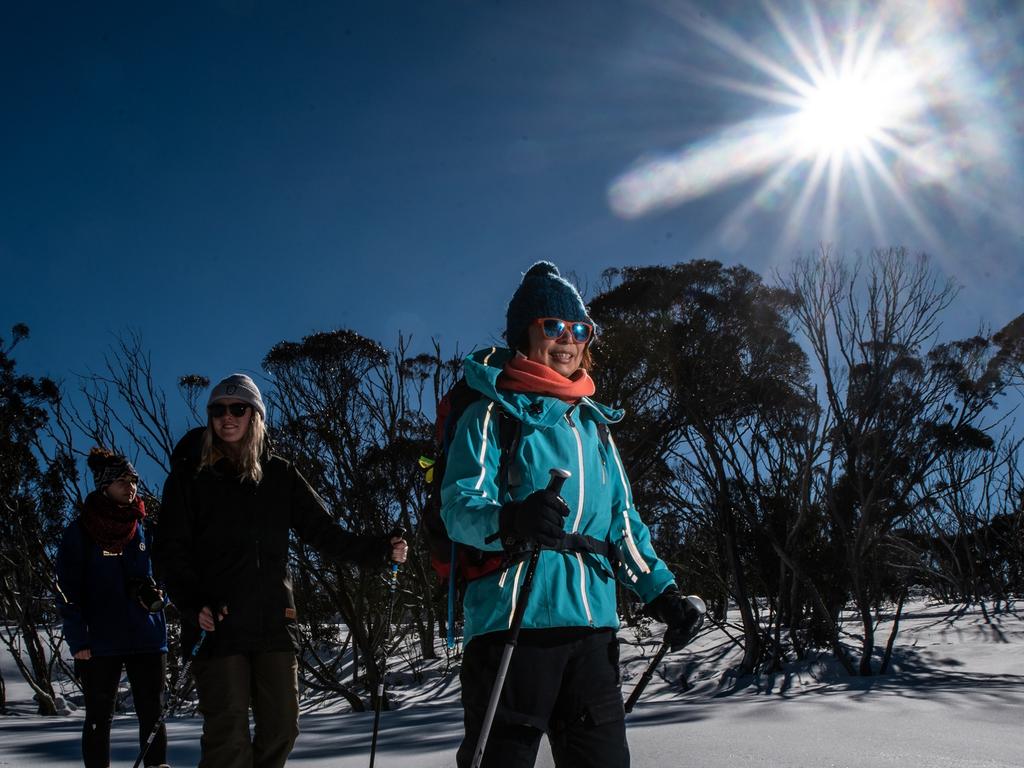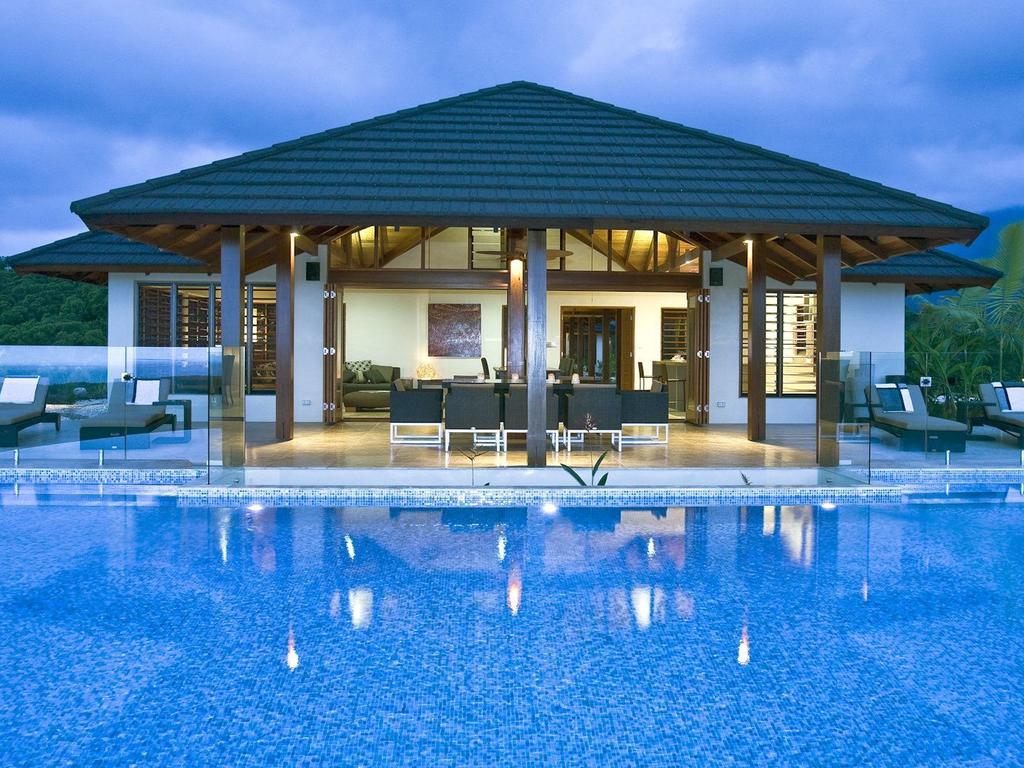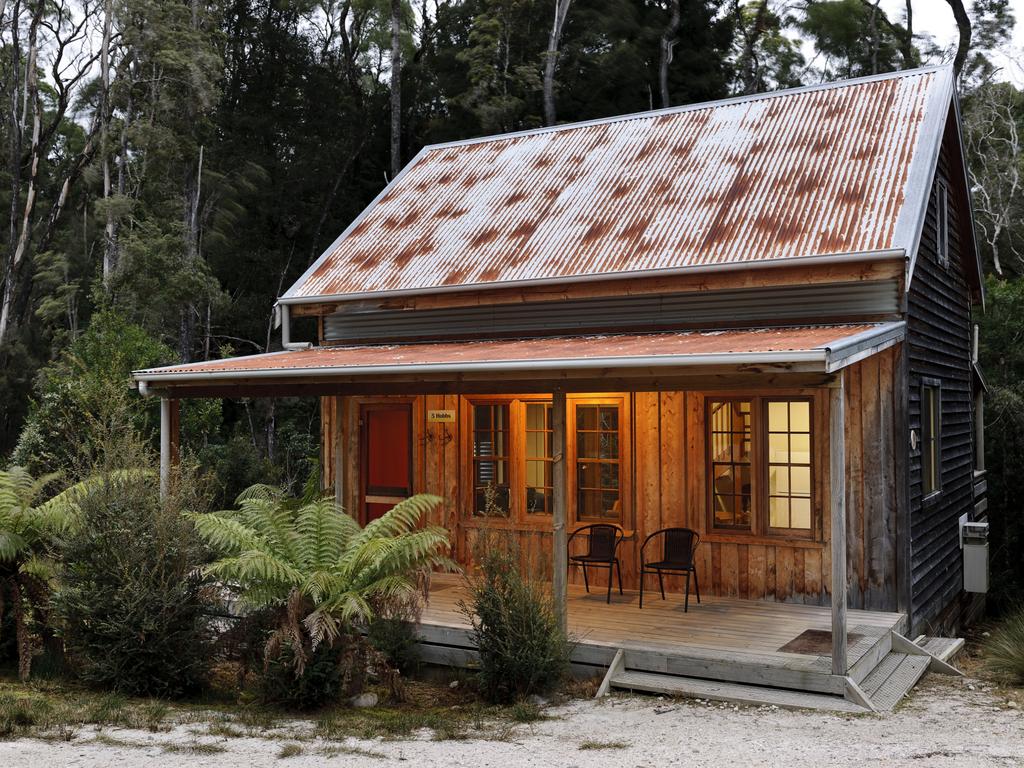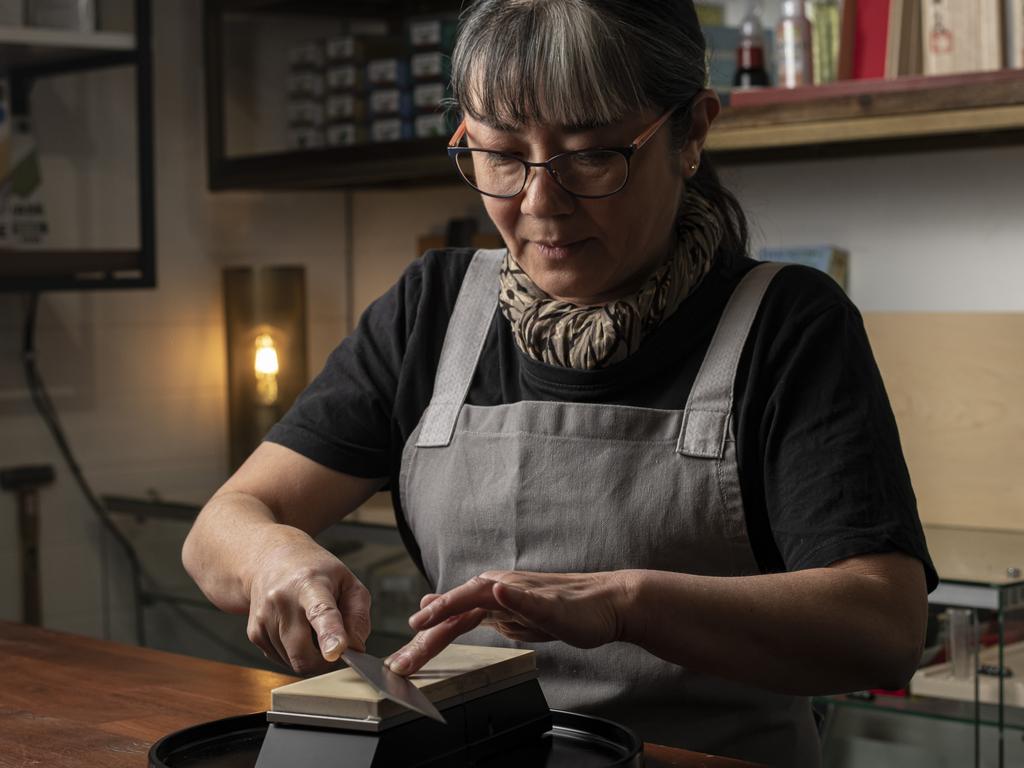Bungle Bungle Range in Purnululu National Park
The rock stars of Purnululu National Park are spectacular, whichever way you look at them.

Like a spoilt bee buzzing around hundreds of hives, a helicopter hovers above the Bungle Bungle Range as if pondering which dome to call home. As it zips back to the red dirt airstrip after its scenic flight, a small plane prepares to transfer guests from an outback lodge. There’s not a motorhome in sight in Purnululu. Driving is dusty, darling. You really must fly.
From Kununurra, we approach the national park’s famous Bungles on Aviair’s shimmering silver PC-12, a nine-passenger plane with private-jet vibes. Peering down at the curvy canyons and gullies, our bird’s-eye view reveals the scope of this UNESCO World Heritage site, more than 50 times the size of Uluru.
The crowded jumble of tiger-striped towers is extraordinary. At a distance, the multi-layered mounds look like chocolate honeycomb mille crepe cakes; their rounded edges seem much softer than rock, as if they are melting in the heat. Flying over the mysterious massif, we can see a section of half-baked “beehives” in the making. Alas, it will take a few more million years for those mountains to be smoothed into conical shape.

It’s the same aerial view that stunned a documentary crew visiting Western Australia in 1983 after a local pilot told them about these unusual formations on a remote cattle station in the East Kimberley. Until then, the place had largely remained the secret of its traditional owners, the Jaru and Gija people, for 20,000 years.
Jointly managed by Aboriginal groups and the Department of Parks and Wildlife, the 240,000ha site became a national park in 1987 and was renamed Purnululu, said to be a mispronunciation of the Gija word for sandstone. Indigenous and non-Indigenous rangers are employed for day-to-day operations, with only a few local tour companies dipping in and out.
Touching down at Bellburn Airstrip, our group is greeted by Bungle Bungle Guided Tours’ Pete Ragland, who has spent four years in the region. Transferring to his 4WD, we head to a walking trail to explore the terrain at ground level and reach the centrepiece of Cathedral Gorge.

“Purnululu continues to intrigue me,” says Ragland. “The colours and formations are captivating, but the remoteness and effort to get here makes it that much more enjoyable. Here, the desert meets the tropics, and it’s much more diverse than just a bunch of rocks. It exceeds expectations, and I get a thrill out of seeing the wonder and awe in people’s faces.”
Trundling along an unsealed road, we are struck by the pretty plains plump with wildflowers. Holly-leaf grevillea have sprouted red flowers, providing a festive welcome. The endemic rock grevillea’s creamy brushes are blossoming next to acacia trees bursting in bright yellow blooms. Closer to the spinifex grass are pink pom-pom bunches of bachelor’s buttons and the little lavender feather dusters of mulla mulla.

“Our flower season is different to down south,” says Ragland. “A lot of our blooming begins as the rains ease, so in an area that’s had a good wet season dump, these are prime conditions to grow. The quantity and vibrancy of the wildflowers this year was, and still is, incredible.”
Arriving at the carpark for our three-hour walk, there’s no long hike to set our eyes on the prize. Several huge domes are right there next to the public amenities. Up close, the textures and tones are different; the rock surface is rough and crusty, the horizontal bands orange and grey. Some of them are 200m tall, capped with the crumbly homes of ambitious termites.
Leading us to a clear example of stratification, Ragland explains how the range was formed from an ancient riverbed 350 million years ago, but has been exposed above ground for only the past 20 million. As the layers of sediment rose up into this colossal block of mountains, the movement caused cracks and weak spots, which were relentlessly buffed by heavy rain, high winds and extreme temperatures.
“The rock is eroded into domes, just like ice cubes melt from the outside in a rounded shape,” Ragland says.
Aside from its geological and cultural significance, the unique colour of the sandstone was another factor in its heritage-listing.
“The orange is not abnormal, particularly when you’re close to an iron oxide-rich desert full of grains of sand, but what is abnormal is the grey to black bands across the rock,” explains Ragland.
“Those layers have more porosity, so after the wet season saturates the rock, it retains that water for long enough to support the growth of blue-green algae, called cyanobacteria, which turns those bands a deep green colour. It’s just enough that it doesn’t die off through the dry season, but only in those bands, so that creates the striped effect.”

The original pale shade of stone is still visible along the sandy paths where we walk. Following the dry bed of Piccaninny Creek, we find one of the few accessible patches of Aboriginal art on a cave overhang, where ochre has been sprayed over hands and various objects. Around the corner is Cathedral Gorge. Walking inside, I gasp.
The sky-high, open-air natural amphitheatre is a neck-craning, jaw-dropping spectacle. On the left, a big rock slip is evidence of the monsoonal whirlpool that washed out this circular, cavernous space long ago.
“That rock fall was along a fault, which would have once connected through,” says Ragland. “There is a perpendicular sub-joint, where waterfall would occur, and over time the water washing down would have exposed the main joint and eroded through it.
“During the wet season, torrents of water wash down and form a whirlpool, which then undercuts the gorge, creating the massive cavern-type appearance.”
The tour continues to the northern gorges, which are different to those in the south. An hour’s drive passes a wall of red hills, puckered with dimples and bulges and polka-dotted by spherical green bushes. This second walk, to Echidna Chasm, is shadier and slightly tropical. Livistona palm trees line a passage of pebbles and boulders, which would have once tumbled along a fast-flowing river. Some of the larger rocks are wedged in our way or stuck in crevices above our heads, as we scramble under and over them.
Cut 180m deep by erosion along a joint in the sandstone, the steep walls narrow until they are shoulder-width apart.

Suddenly, everyone stops, transfixed by a golden glow. The midday sun is streaming down the slit like a spotlight, illuminating the gorge and silhouetting hikers below. Sacred, in anyone’s language.
The drive back is silent as our group is engrossed by the roadside landscape. It’s hard to believe such an astonishing place has been open to travellers for fewer than 40 years. At the opposite end of the Kimberley to busier Broome in the west, Purnululu can also be reached independently if self-driving an off-road vehicle, while those in unsuitable cars and motorhomes can leave them behind in Kununurra and catch a plane in.
Before tomorrow’s return one-hour flight, tracking over Lake Argyle, Ord River and Argyle Diamond Mine, we spend a peaceful night in the park at Bungle Bungle Savannah Lodge. The 27 stand-alone cabins are private, set among the bushland with a soundtrack of twittering native birds. Rooms have a front deck to enjoy the serenity, fans, ensuite bathrooms with eco-friendly toiletries provided, and louvre windows for a cooling cross breeze.
One of the staff, Cherylene, a Gija woman who grew up in Purnululu, joins guests beside the campfire for a cup of tea under the stars.
“Working on country means we have the opportunity to educate visitors to the area,” she says. “To teach them how to respect and care for country and, in turn, country will respect and care for them.”

In the know
Aviair offers day trips, scenic flights and overnight stays. A one-night package starts at $1589 a person (single supplement $158), including return flights from Kununurra to Purnululu National Park, basic accommodation and meals at Bungle Bungle Savannah Lodge, and walks to Cathedral Gorge and Echidna Chasm with Bungle Bungle Guided Tours.
A scenic flight by helicopter is an additional cost, from $299 a person.
To self-drive, the turn-off to Purnululu from the Great Northern Highway is 250km southwest of Kununurra. Access via Spring Creek Track is suitable only for 4WD vehicles and single-axle off-road trailers.
Louise Goldsbury was a guest of Tourism Western Australia.





To join the conversation, please log in. Don't have an account? Register
Join the conversation, you are commenting as Logout